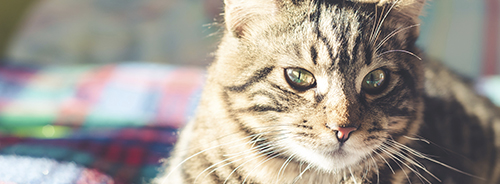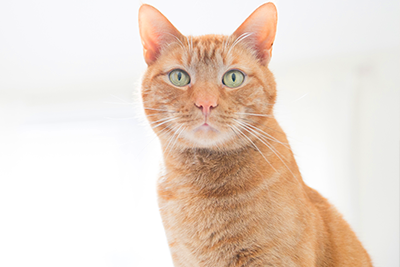
Chronic kidney disease (CKD), or a slow decline in kidney function over time, is really common. In fact, it has been commonly accepted that 1 in 3 cats will develop some form of kidney disease in their lifetime. And a recent study has found that it is likely even more common, with 40% of cats less than 15 years of age impacted. If you are fortunate enough for your kitty to live past 15 years, then there is an 80% likelihood that he or she will have some kidney health concerns. So, it is not surprising that veterinarians speak about CKD frequently with cat parents. It’s a problem that often comes with a mixture of good news and bad news.
First, the most important piece of good news about CKD to is that many cats do well for years after diagnosis. The bad news about CKD is that classic veterinary medicine has limitations that can be frustrating when battling the condition. But another, brand new piece of good news is that at least some of that could be about to change. I’ll touch more on this in a little bit.
A new test is available to help detect kidney disease earlier,
ask your veterinarian about the new IDEXX SDMA test.
Learn about
IDEXX SDMA testing
But first, to understand why CKD is frustrating, let’s cover some of the reasons chronic kidney disease can be a headache today:
1) Chronic kidney disease can be stealthy until it’s fairly advanced
Kidney disease is easy to diagnose when it’s advanced, but it’s sometimes very hard to recognize in the early stages. Often it sneaks up on us veterinarians, even while we are looking for it. The reason is that cats don’t get visibly sick from CKD until their kidneys are very unhealthy (see the common signs of kidney disease here), so we rely on regular testing of blood and urine to screen for early indicators of kidney disease.
2) Early diagnosis of chronic kidney disease can be life-changing, but has been a challenge with available tests
One of the first things often noticed by cat parents whose cats have CKD is a change in their peeing or drinking habits. Kidney disease makes it harder for a cat’s body to conserve water and eliminate waste as efficiently, so you might notice that your cat is drinking more or peeing more. (Even to the point of “flooding” the litter because urine in cats with more advanced CKD is less concentrated.) So, to help see how a cat’s kidneys are doing, vets test the urine quality or appropriateness of urine concentration. This is an inexpensive and basic component of a complete urinalysis, but it often falls short: it tells us a lot of information, but only after about 2/3 of kidney function is lost. On that same urine test, your veterinarian will look for evidence that your kitty’s kidneys are leaking protein, which can be another indication of feline kidney disease, but often is a late finding.
vets test the urine quality or appropriateness of urine concentration. This is an inexpensive and basic component of a complete urinalysis, but it often falls short: it tells us a lot of information, but only after about 2/3 of kidney function is lost. On that same urine test, your veterinarian will look for evidence that your kitty’s kidneys are leaking protein, which can be another indication of feline kidney disease, but often is a late finding.
The current blood tests for kidney disease are similarly problematic because they only become abnormal after about 3/4 of kidney function is lost. Both can be extremely important diagnostic tools, but I’d prefer to be earlier to the game – to be able to diagnose CKD before the disease has advanced this far.
Sometimes diseased kidneys change shape and become smaller which is something your veterinarian may feel when examining your cat, but these are usually later changes, as well.
3) Learning about chronic kidney disease that’s more advanced,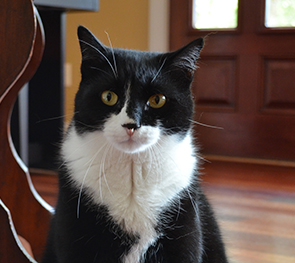 after kitties are already clinically ill and dehydrated, can really discourage some cat parents
after kitties are already clinically ill and dehydrated, can really discourage some cat parents
As I mentioned before, many cats can live with CKD for years. However, sometimes having such an advanced diagnosis can be overwhelming to a cat parent. The possibility of hospitalizing a sick kitty for a day or two to help with rehydration and to permit some testing to get their cat back on track (we hope) might make some cat owners shut down and decide not to try -- it just seems like too much bad news. I hate the fact that we sometimes don’t get the chance to try to help because we are figuring it out late in the game.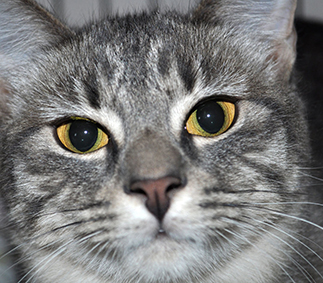 4) Functional kidney loss is usually permanent
4) Functional kidney loss is usually permanent
Once a nephron, the functional unit of the kidney, is gone, it is gone for good. The kidney does have hundreds of thousands of them, for back up; and cats can feel great with only one kidney, provided it’s a healthy one, but as one nephron is lost to disease or injury, the other ones have to work harder. They can recover from injury, but the kidneys don’t get new nephrons so once a kidney problem is known, we need to save what function is left – another reason why we love being able to catch the disease as early as possible, is so we can search for any treatable or curable conditions causing the damage.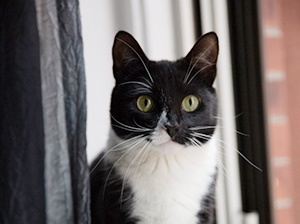 5) There are many different causes of kidney disease, some treatable, some not, so having time to find them is key
5) There are many different causes of kidney disease, some treatable, some not, so having time to find them is key
While it is true that many cats with CKD will have kidney disease that does not have a defined cause or treatment, we always want to look for the “good” diseases that may cause or complicate kidney disease, such as infection or obstruction. And, of course, we want to find the treatable diseases early. Prompt treatment of bacterial kidney infection, termed pyelonephritis, or relieving an upper urinary obstruction caused by kidney stones and fragments that lodge in the ureters, can help spare the kidneys’ remaining nephrons. Kidney stones and chronic pyelonephritis might not make cats feel bad consistently, or their signs can be subtle and attributed to other health problems that are already diagnosed. Or it may seem that Kitty is slowing down with age and starting to have a few bad days here and there. Certainly, if we don’t know that the kidneys are challenged, then we don’t know to look for (and can’t treat) these contributing causes, either.
So, in summary, a big reason we can sometimes hate CKD is we hate to be late:
- Late to recognize
- Late to diagnose
- Late to treat
- Late to manage optimally
These are all circumstances that can force veterinarians to focus on the bad news rather than the good news of keeping a cat healthy and with their families as long as possible. If you have any questions or concerns, you should always visit or call your veterinarian -- they are your best resource to ensure the health and well-being of your pets. Resources:
But now for the good news for at least 1 in 3 cats: A simple new blood test, the IDEXX SDMA screening, will be available this summer to help identify kidney disease on average 17 months earlier than was possible previously. Included as part of your cat’s regular blood screening during his checkup, this brand new marker can indicate a decline in kidney health at an average of 40% of kidney loss versus the 66%-75% loss from other tests. This can help veterinarians start looking for the good diseases earlier, when there’s possibly more to gain, and they can customize a plan to optimize your kitty’s kidney health. Now that certainly gives us – and our cats – something to purr about.
For more information about kidney disease in cats, your veterinarian is your best resource.

